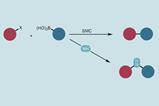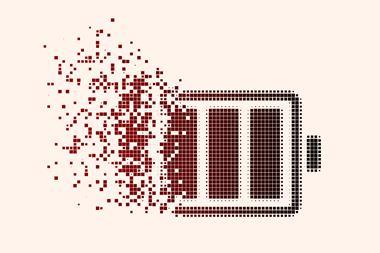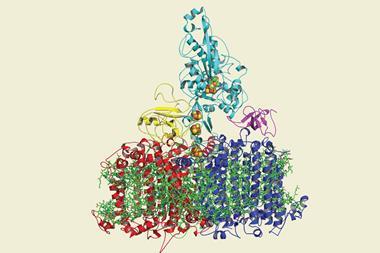Microprocessors can be powered using photosynthetic microorganisms in ambient light without the need for an external power source, new research shows. Led by Emre Ozer from Arm and Christopher Howe from the University of Cambridge, researchers in the UK, Italy and Norway introduced cyanobacteria Synechocystis sp. PCC6803 into an aluminium–air battery to create a biophotovoltaic device. The device is a similar size to an AA battery, is made from durable and mainly recyclable materials and does not require a dedicated light source to function. It is the first reported bioelectrochemical system capable of continuously powering a microprocessor outside of laboratory-controlled conditions.
‘We decided that we didn’t want to operate the system with a dedicated source of energy. We needed to prove that we can operate under ambient light, and we were able to do it,’ comments Paolo Bombelli, one of the lead researchers from the University of Cambridge.
The team tested the stability and biocompatibility of the aluminium substrate, and demonstrated that the system could continuously power an Arm Cortex-M0+ processor for six months under varied ambient conditions, within a temperature range of 13.8–30.7°C. The processor performed 1.23 × 1011 cycles of 45 minutes of computation followed by a 15-minute standby period. Supplied entirely by the biophotovoltaic cell, the processor drew an average current of 1.4μA with a voltage of 0.72V. The system only failed when an ice pack was used to lower the temperature to 5°C.

The team intentionally left the biophotovoltaic system unsealed. Once the system was established, Halomonas and Pseudomonas species had grown alongside the Synechocystis species. ‘We have deliberately kept the system not under sterile conditions. By permitting contaminants to enter the system, we permit the evolution of a biome,’ Bombelli explains. ‘We were very pleased to discover this complex and intricate mix of cultures working together, which is one of the key elements of the system operating well. These mixed cultures give a stable, long-lasting biome, but also help the process of electron transport.’
The researchers hypothesise that the biophotovoltaic system operates via both an electrochemical and a bioelectrochemical mode. In the electrochemical mode, the microorganisms provide a favourable environment for electrochemical aluminium oxidation, generating electrons. In the bioelectrochemical mode, electrons are transferred directly from the bacteria, such as from the outer cell membrane, and are shuttled to the aluminium.
‘The biophotovoltaic device reported here shows the unpredictable nature of biology but also its adaptable and resilient side. The continuous powering without replenishing the bioanode for as long as six months is remarkable,‘ says Marin Sawa, an expert in photosynthesis-powered bioelectronics from Newcastle University in the UK. It ‘seems to be far more robust and adaptable than I imagined for bioelectricity generation.’
Applications of the system could include powering small electronic devices. There is significant potential to use the technology in remote locations where mains electricity is not an option, and where using batteries that require replacing regularly is inconvenient.
Kevin Redding, an expert in photosynthetic energy conversion from Arizona State University in the US is impressed by the stability of the system. ‘This study serves as an encouraging proof of concept that a microbial cell can use photosynthesis for long-term power generation sufficient to power a CPU. This may convince industry to take this technology seriously enough to invest the time and resources necessary to develop it into a useful technology. Pairing of such power devices with small CPUs might spur chip makers to develop new power-efficient chips designed to work with biophotovotaic cells in the future.’
References
P Bombelli et al, Energy Environ. Sci., 2022, DOI: 10.1039/d2ee00233g

















No comments yet